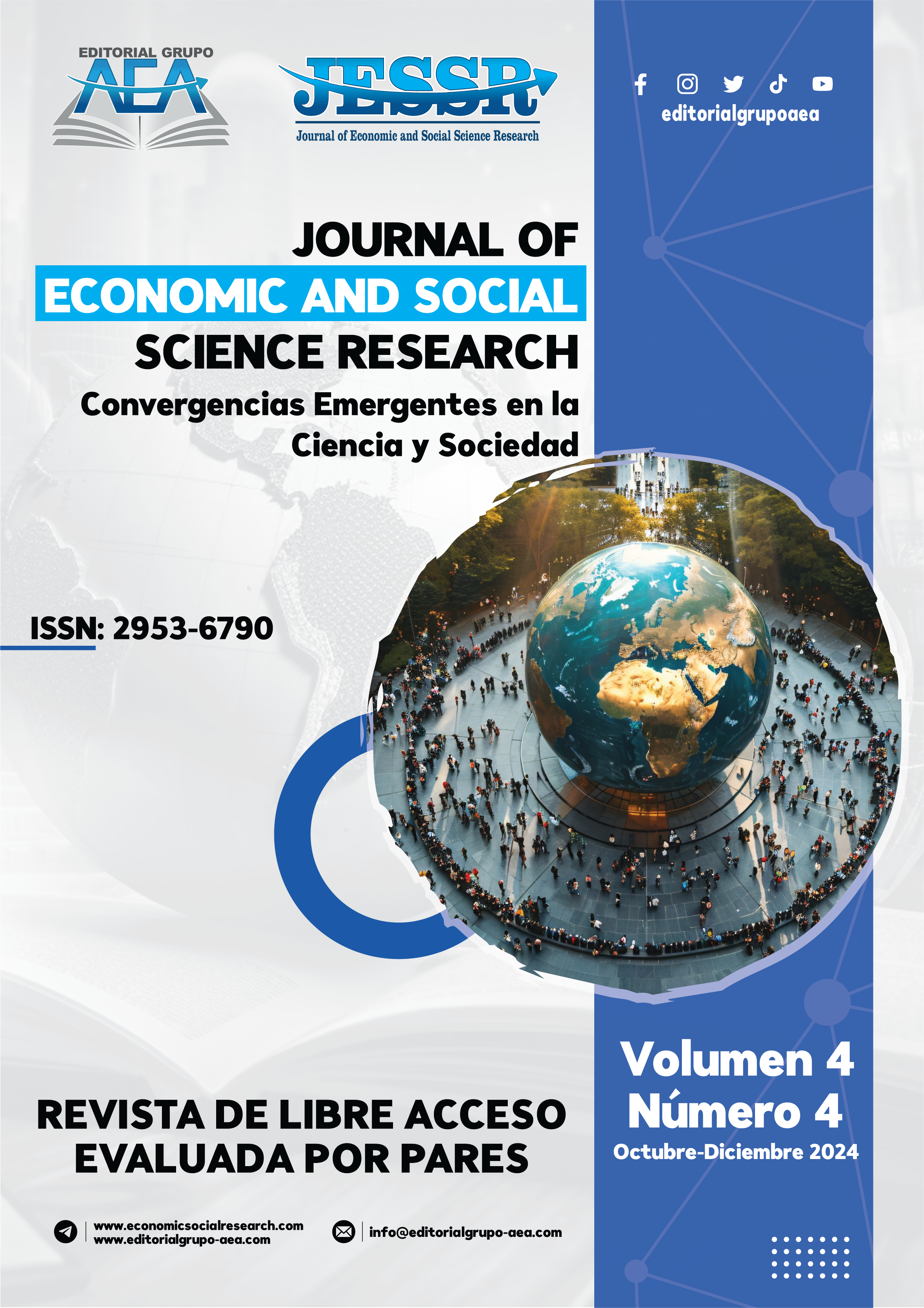Geographic distribution and current conservation status of Cedrela odorata and Cedrelinga cateniformis in Ecuadorian Amazonia
Main Article Content
Abstract
The study estimates the geographical distribution and conservation status of Cedrela odorata and Cedrelinga cateniformis in the Ecuadorian Amazonia, species of great ecological and economic importance that face severe threats from deforestation and climate change. Data curated and published by the ECUAMZ Herbarium and the Global Biodiversity Information Facility from other National and International Herbaria were used, and recent studies on the ecology, conservation, and climate projections for both species were also evaluated. The results highlight that Cedrela odorata is classified as vulnerable due to habitat fragmentation, while Cedrelinga cateniformis, although not formally assessed, is also at risk due to habitat loss. The main threat factors identified were the expansion of agricultural frontiers and illegal logging, which have fragmented forests and reduced connectivity between populations. The discussion stresses the urgent need to implement conservation strategies, such as the creation of ecological corridors, reforestation with Cedrelinga, and the use of genetic tools to improve the viability of Cedrela populations. The research concludes that immediate intervention is essential to mitigate the effects of climate change and ensure the sustainability of these species.
Downloads
Article Details
Section

This work is licensed under a Creative Commons Attribution-NonCommercial 4.0 International License.
How to Cite
References
Caicedo-Aldaz, J. C., & Herrera-Sánchez, D. J. (2022). El Rol de la Agroecología en el Desarrollo Rural Sostenible en Ecuador. Revista Científica Zambos, 1(2), 1–16. https://doi.org/10.69484/rcz/v1/n2/24
Correa-Salgado, M. de L., Herrera-Feijoo, R. J., Ruiz-Sánchez, C. I., & Guamán-Rivera, S. A. (2024). Fundamentos de Bioquímica Vegetal. Editorial Grupo AEA. https://doi.org/10.55813/egaea.l.68
Earth Journalism Network. (2023). The Chuncho, Ecuador's Last Fine Wood, Is Caught Between Exploitation and Hope. https://earthjournalism.net
Estrada-Contreras, I., Equihua, M., Laborde, J., Martínez Meyer, E., & Sánchez-Velásquez, L. R. (2016). Current and future distribution of the tropical tree Cedrela odorata L. in Mexico under climate change scenarios using MaxLike. PLOS ONE, 11(10), e0164178. https://doi.org/10.1371/journal.pone.0164178
Finch, K., Cronn, R., & Heyduk, K. (2019). Predicting the geographic origin of Cedrela odorata based on DNA variation. Conservation Genetics, 20(1), 101-110. https://doi.org/10.1007/s10592-020-01282-6
Forest Trends. (2021). Illicit Harvest, Complicit Goods: The State of Illegal Deforestation for Agriculture. https://www.forest-trends.org
Gálvez López, L., Vallejo Reyna, M. A., Méndez Espinoza, C., & López Upton, J. (2020). Cedrela odorata L.: oportunidades para su conservación y mejoramiento genético. Revista Mexicana de Ciencias Forestales, 11(58). https://doi.org/10.29298/rmcf.v11i58.622
Herrera-Feijoo, R. J. (2024). Principales amenazas e iniciativas de conservación de la biodiversidad en Ecuador. Journal of Economic and Social Science Research, 4(1), 33–56. https://doi.org/10.55813/gaea/jessr/v4/n1/85
Herrera-Feijoo, R. J., Chicaiza-Ortiz, C. D., Rivadeneira-Arias, V. del C., & Andrade, J. C. (2023). Análisis bibliométrico como una herramienta en la biotecnología ambiental. In Biotecnología Ambiental, Aplicaciones y Tendencias (pp. 72–91). Editorial Grupo AEA. https://doi.org/10.55813/egaea.cl.2022.17
IUCN. (2024). The IUCN Red List of Threatened Species: Cedrela odorata. https://www.iucnredlist.org
Lombard, L., Bogale, M., Montenegro, F., Wingfield, B. D., & Wingfleld, M. J. (2008). A new bark canker disease of the tropical hardwood tree Cedrelinga cateniformis in Ecuador. Fungal Diversity, 31, 73–81. https://www.scopus.com/inward/record.uri?eid=2-s2.0-56749154018&partnerID=40&md5=b83317b6aa3c0dfe12820ec0c66d6a58
Loor-Macías, M. G., Mendoza-Cevallos, M. G., Alcívar-Catagua, M. A., Álvarez-Gutiérrez, Y. de las M., Lino-García, M. J., Cañarte-Baque, S. J., Gras-Rodríguez, R., Quimis-Gómez, A. J., & Fienco-Bacusoy, A. R. (2024). Regulaciones Ambientales y de Seguridad Laboral en Ecuador. Editorial Grupo AEA. https://doi.org/10.55813/egaea.l.93
Manzanilla-Quijada, G. E., Treviño-Garza, E. J., Aguirre-Calderón, O. A., Yerena-Yamallel, J. I., & Manzanilla-Quiñones, U. (2020). Distribución potencial actual y futura e identificación de áreas aptas para la conservación de Cedrela odorata L. en la península de Yucatán. Revista Chapingo Serie Ciencias Forestales y Del Ambiente, 26(3). https://doi.org/10.5154/r.rchscfa.2019.10.075
Mieles-Giler, J. W., Guerrero-Calero, J. M., Moran-González, M. R., & Zapata-Velasco, M. L. (2024). Evaluación de la degradación ambiental en hábitats Naturales. Journal of Economic and Social Science Research, 4(3), 65–88. https://doi.org/10.55813/gaea/jessr/v4/n3/121
Missouri Botanical Garden. (10 de 09 de 2024). Tropicos. Obtenido de https://tropicos.org/name/20400353
Oliveira, M. G., Araujo, C. S., Do Vale, I., & Miranda, I. S. (2022). Tree population structure in fragments of different sizes in the Eastern Amazon. Environment, Development and Sustainability, 24(4), 5743–5763. https://doi.org/10.1007/s10668-021-01681-w
Porfirio, L. L., Harris, R. M. B., Lefroy, E. C., Hugh, S., Gould, S. F., Lee, G., Bindoff, N. L., & Mackey, B. (2014). Improving the Use of Species Distribution Models in Conservation Planning and Management under Climate Change. PLoS ONE, 9(11), e113749. https://doi.org/10.1371/journal.pone.0113749
Rojas Briceño, N. B., Cotrina Sánchez, D. A., Barboza Castillo, E., Barrena Gurbillón, M. Á., Sarmiento, F. O., Sotomayor, D. A., Oliva, M., & Salas López, R. (2020). Current and Future Distribution of Five Timber Forest Species in Amazonas, Northeast Peru: Contributions towards a Restoration Strategy. Diversity, 12(8), 305. https://doi.org/10.3390/d12080305
Santos, G. M., Granato-Souza, D., Ancapichún, S., Oelkers, R., Haines, H. A., De Pol-Holz, R., Andreu-Hayles, L., Hua, Q., & Barbosa, A. C. (2024). A novel post-1950 CE atmospheric 14C record for the tropics using absolutely dated tree rings in the equatorial Amazon. Science of The Total Environment, 918, 170686. https://doi.org/10.1016/j.scitotenv.2024.170686
Stahle, D. W., Torbenson, M. C. A., Howard, I. M., Granato-Souza, D., Barbosa, A. C., Feng, S., Schöngart, J., Lopez, L., Villalba, R., Villanueva, J., & Fernandes, K. (2020). Pan American interactions of Amazon precipitation, streamflow, and tree growth extremes. Environmental Research Letters, 15(10), 104092. https://doi.org/10.1088/1748-9326/ababc6
Universidad Estatal Amazónica. (2024). Centro Experimental de Investigación y Producción Amazónica. Obtenido de https://www.uea.edu.ec/web/v2/?page_id=23073
Villacís, J., Armas, C., Hang, S., & Casanoves, F. (2016). Selection of Adequate Species for Degraded Areas by Oil‐Exploitation Industry as a Key Factor for Recovery Forest in the Ecuadorian Amazon. Land Degradation & Development, 27(7), 1771–1780. https://doi.org/10.1002/ldr.2511
Woodward, C. L. (1996). Soil compaction and topsoil removal effects on soil properties and seedling growth in Amazonian Ecuador. Forest Ecology and Management, 82(1–3), 197–209. https://doi.org/10.1016/0378-1127(95)03667-9
World Resources Institute. (10 de 09 de 2024). Global Forest Watch. Obtenido de https://www.globalforestwatch.org/





